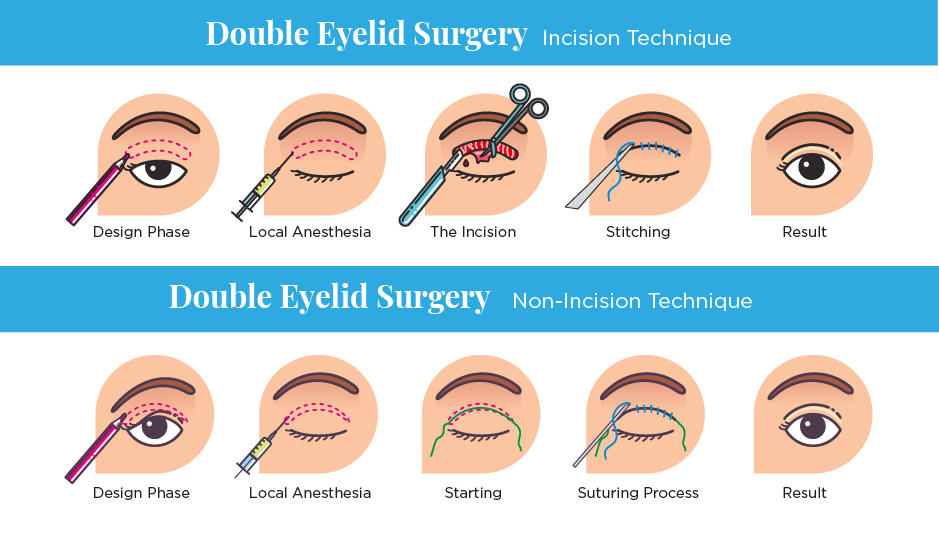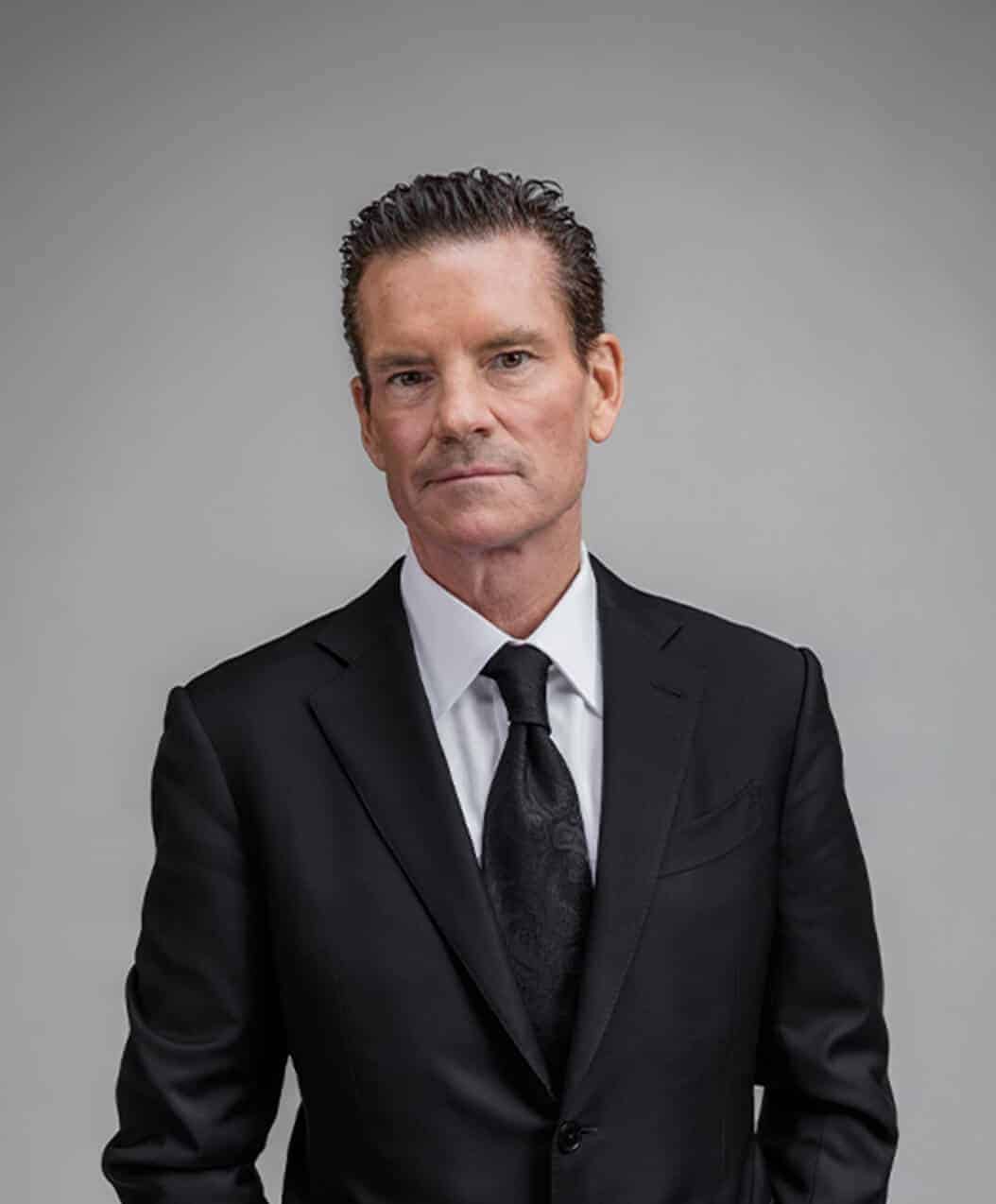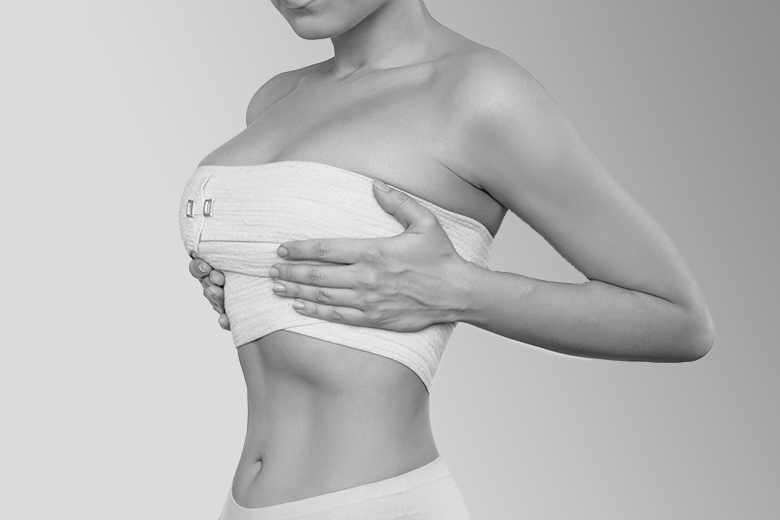September 8th, 2024
Dr. Mulholland, Md
Double eyelid surgery is a type of cosmetic surgery that forms creases in the upper eyelids, creating double eyelids. This procedure is a type of blepharoplasty, which is commonly performed to correct droopy eyelids or remove bags under the eyes but can also be performed to create double eyelids.
There are a number of different types of double eyelid surgery, which can be performed to address specific concerns related to the appearance of your eyes and their lids.
Common Types Of Double Eyelids
The type of double eyelid surgery that is right for you will depend on the type of eyelids you have, and the type of eyelids you wish to have. There are a number of different types of lids, which we will detail below.
Monolids
Monolids, also known as epicanthal folds, are a single piece of skin that runs from the nose to the eyebrow. This gives the eyelid the appearance of having only a single crease. While monolids do not affect vision, they can result in the eye looking more droopy or prominent and can create a more narrow appearance to the eye. The upper lid can also appear puffier. Monolids are usually a result of genetics, and they are also common among those with certain medical conditions.
Tapered Eyelids
A tapered eyelid occurs when the eyelid crease is parallel to the upper eyelash, and also merges with the inner corners of your eyes.
Lateral Flare
A lateral flare, which is also a type of tapered eyelid, is when the outer part of the eyelid platform is wider than the central part.
Parallel Eyelids
With parallel eyelids, the inner corner of the eyelid crease does not narrow; rather, it runs above your upper eyelash line but doesn’t meet the corners of your eyes.
Hooded Eyelids
With hooded eyelids, there is an excess layer of skin that drops over the eyelid crease, causing the eyelid to appear smaller. In some cases, a hooded eyelid can obscure the eyelid crease completely. Hooded eyelids can sometimes be caused by aging, but individuals of any age can have hooded eyelids.
The Purpose Of Double Eyelid Surgery
Double eyelid surgery is performed to give the eyelid a crease, which increases the space between the upper and lower lids. This makes the eyes appear larger and can also create a more alert, youthful appearance. The surgery can also repair drooping skin around the eyes, and can help reduce crow’s feet and wrinkles around the eyes, and can improve vision in patients whose drooping excess skin has resulted in partially or fully occluded vision in one or both of their eyes.
What’s The Difference Between Double Eyelid Surgery & Blepharoplasty?
While double eyelid surgery is a type of blepharoplasty, there are some differences between the two procedures. Double eyelid surgery is undertaken specifically to give the eyelid a crease, while blepharoplasty can be performed to address some issues concerning the tissues surrounding the eyes, including sagging or drooping skin, bags, discolouration, wrinkles, or crow’s feet. Double eyelid surgery can address some of these other concerns but is performed specifically to alter the appearance of the eyelids.
Why Are There Different Types Of Double Eyelid Surgery?
There are different types of double eyelid surgery, and the type that is ideal for you will depend largely on your anatomy. The three main types of double eyelid surgery are distinguished by the incision method: If the patient does not have any excess skin or excess fat around their eyes, then non-incision double eyelid surgery is ideal. If the patient has excess skin that requires removal, an incision double eyelid surgery is ideal. A surgeon may also perform a partial incision surgery, where the incision made is as small as possible on patients who have some excess skin — but not fat — that requires removal.
The Different Techniques Of Double Eyelid Surgery
 Regardless of what type of double eyelid surgery is ideal for you, all double eyelid surgery procedures at TPS are performed under either local or general anesthesia. Some swelling and redness will also be experienced after the surgery, but these side effects will subside quickly. On average, double eyelid surgery takes between 1-2 hours.
Regardless of what type of double eyelid surgery is ideal for you, all double eyelid surgery procedures at TPS are performed under either local or general anesthesia. Some swelling and redness will also be experienced after the surgery, but these side effects will subside quickly. On average, double eyelid surgery takes between 1-2 hours.
Full Incision
During a full incision double eyelid surgery, the plastic surgeon will make a full incision along most of the new eyelid crease and put removable sutures in place, which will hold the eyelid in place during healing. With this procedure, which is ideal for patients who require the removal of excess skin and fat around their eyes, there may be a scar along the new crease.
Partial Incision
In a partial incision, the plastic surgeon makes the incision as small as possible, so any scarring is minimal.
No Incision
Patients who do not have any excess fat or skin that needs to be removed can have incision-free double eyelid surgery. For this procedure, the surgeon will create small holes in the eyelid, and then threads permanent sutures through the holes. This creates a crease in the eyelid. While this procedure is reversible, the crease may also come undone with time.
Why Choose TPS For Your Double Eyelid Surgery?
Because the soft tissues around the eyes are sensitive and delicate, you need to find a surgeon with years of experience in this practice. Toronto Plastic Surgeons trained in cosmetic blepharoplasty, Asian blepharoplasty, and facial surgery by famed Hawaiian plastic surgeon Dr. Bob Flowers during his post-graduate fellowship, and has performed more than 3,000 facelifts, blepharoplasties, and cosmetic facial procedures throughout his career.
At TPS, our on-site surgical suite, recovery, and overnight rooms exceed the highest levels of certification, making our plastic surgery centre one of the most dependable and elevated experiences in pre-surgical and outpatient care. Many patients who undergo double eyelid surgery also explore complementary procedures to achieve a balanced, refreshed look – from fractional Erbium wrinkle removal for smoother skin, to liposuction for facial contour enhancement, or FUE hair transplants to restore a youthful hairline.
If you’re addressing changes due to age, childbirth, or lifestyle, a Mommy Makeover may also be a transformative option to consider alongside facial procedures. Toronto Plastic Surgeons’s extensive training and multi-disciplinary expertise ensure every treatment is customized to complement your unique features and long-term goals.
FAQ
What Determines The Type Of Double Eyelid Surgery That’s Right For Me?
The type of double eyelid surgery best suited for you depends on several factors, including:
- Eyelid Anatomy: The structure of your eyelids, including the amount of skin, fat, and muscle, plays a significant role in determining the appropriate technique.
- Desired Outcome: Your aesthetic goals and the look you wish to achieve will influence the choice of procedure.
- Age: Younger patients with less excess skin may benefit from different techniques compared to older patients.
- Skin Type and Elasticity: The quality of your skin can impact the decision-making process.
- Overall Health: General health conditions and any existing eye-related issues are also considered.
- Surgeon’s Expertise: The surgeon’s experience and comfort with specific techniques can guide the selection of the surgical method.
A thorough consultation with a qualified plastic surgeon will help determine the best approach for your unique situation.
Can Double Eyelid Surgery Also Correct Vision Issues Caused By Droopy Eyelids?
Yes, double eyelid surgery can also address vision issues caused by droopy eyelids (ptosis). When the upper eyelid droops excessively, it can obstruct the field of vision. In such cases, a functional eyelid surgery may be performed to remove the excess skin and lift the eyelid, improving both the appearance and the functionality of the eyelid. This procedure not only enhances the eyelid’s appearance but also restores normal vision by removing the obstruction.
During your consultation, your surgeon will assess whether your droopy eyelids are affecting your vision and discuss the potential benefits of combining cosmetic and functional eyelid surgery.


